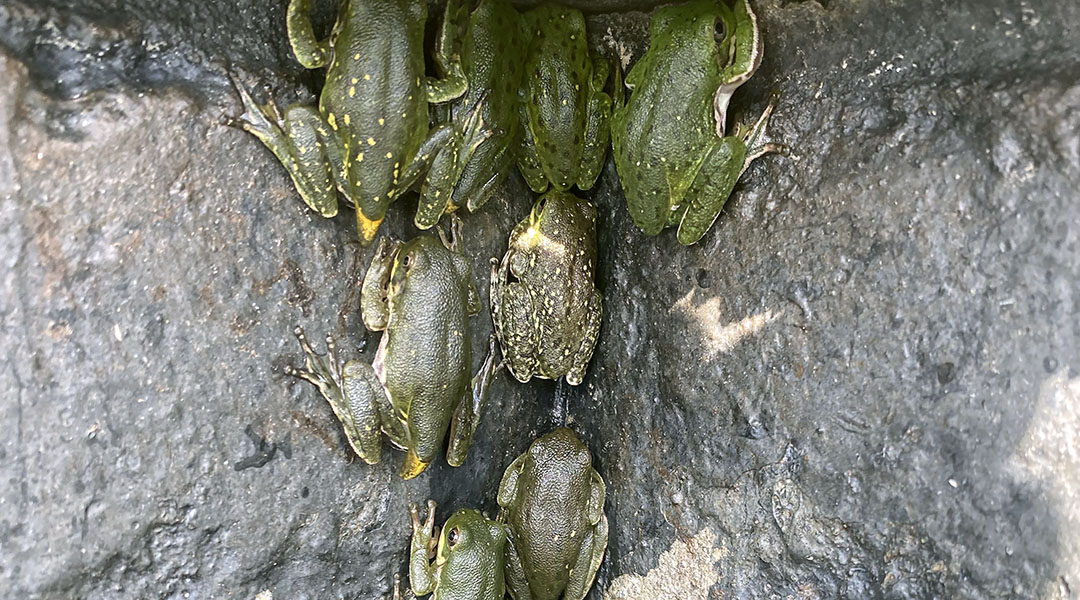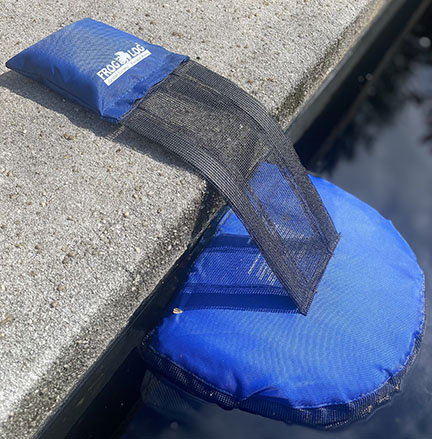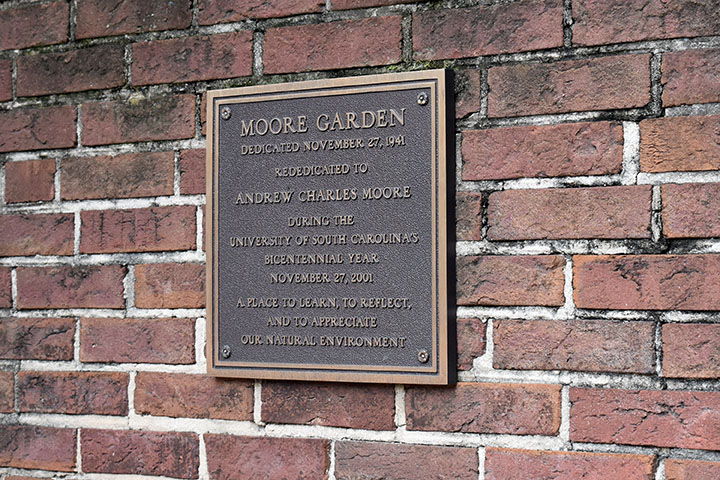Eight frogs huddle against the side of the fountain. The lip above their heads poses a challenge during their climb to freedom.
Last Wednesday, members of the student herpetology club, outfitted with large nets and buckets, headed to the fountain in front of the Thomas Cooper Library. Their mission: save the frogs.
“I don’t know how successful this will be but at least we tried to get them out instead of just killing the ones in the fountain,” said Lillian Self, who is the president of the University of South Carolina Herpetology Club.
To combat overpopulation in the fountain, the Herpetology Club, in collaboration with the university, has begun an ongoing relocation project to give frogs a better chance at survival.
“This is not a new thing,” said Koby Padgett, communications manager for the division of administration and finance at USC. “Frogs have been spawning in the fountain for three years.” The campus landscaping staff first noticed the frogs in the fountain about three years ago, but have begun to see many more over the last year.
“They’ve chosen a place directly in the center of campus where there’s a lot of foot traffic and no habitat for them,” said Self.
Located behind freshman dorms Patterson and South Tower, A.C. Moore Garden offers a more natural environment. Less concrete, less foot traffic and easier water access for the frogs, the new location away from the center of campus increases the frogs’ chance of survival, said Self.
Self said the club collected more than 200 frogs this past Wednesday to be relocated.
“We were pretty successful the first run,” said Self.
The Herpetology Club plans to meet around four more times this semester. Self said the goal is to relocate the frogs in hopes they don’t lay eggs in the pond next year, which will be important in keeping population numbers down. The species in the fountain are Squirrel Tree Frogs, which are known for their variations in color and individually unique markings, according to Self.
The relocation project is mutually-beneficial for the frogs and the fountain. The fountain is full of both tadpoles and frogs, but the tadpoles are left behind to finish their growth cycle while the full grown frogs are relocated. According to Padgett, the amphibians assist with controlling bug populations around the fountain, making the environment more pleasant for students.
Dr. Tim Mousseau, a professor in the department of biological sciences at USC said the frogs go through two major phases of life. The first is the aquatic phase where eggs are laid in the water before tadpoles hatch and grow. The second is the terrestrial phase where adult frogs spend much of their time on land. The tadpoles are herbivores and will eat the algae at the fountain’s surface. The adult frogs are carnivores, which will feast on bugs and other organisms in and around the fountain.
According to Mousseau, frogs are likely to be around for most of the year due to the warm climate in South Carolina.
“Anytime of year you’ll hear the frogs come out and start singing,” said Mousseau.
The relocation project will run through the end of this semester. By December, Self says the frogs will either leave or die due to the change in temperature. The amphibians are ectotherms, meaning they are unable to produce their own body heat and rely on their environment for warmth.
Self and her team found multiple dead frogs floating at the surface on Wednesday.
“The populations of the frogs that are there are so high that it’s really difficult for them to survive there,” said Self. “Dead organic matter is not something that you want inside a fountain.”
According to Self, of the 200 frogs that were relocated on Wednesday, about 7 or 8 had physical deformities, most notably only having one eye.
Small amounts of chlorine and dye are added to the pond periodically to manage algae growth. Both Padgett and Self said these chemicals are not a major threat to the frog’s health, but there may be some harmful side effects.
“Amphibians in general are particularly sensitive to toxins in the environment,” said Mousseau.
The more immediate threat is temperature fluctuations, such as high heat that exceeds the frogs’ tolerance levels. The fountain pond is rather exposed and the temperature fluctuates a lot, which creates a stressful environment. Mousseau explained that higher environmental stress leads to asymmetry in development
Campus staff installed products to help the frogs get out of the fountain. These Frog Logs can be seen along the outskirts of the fountain and read “critter saving escape ramp.”
Some think that the frogs are unable to leave the fountain due to the edge being too high, but Self thinks otherwise. “A lot of the frogs are up against the side of the fountain and because there is a lip, we aren’t sure if they can get out or not,” said Self. “I think they can personally, but they’re not for some reason.
When they aren’t working on frog relocation, the Herpetology Club meets twice a month to host guest speakers, do research, go on excursions and talk about how to properly take care of reptiles and amphibians.
Squirrel Tree Frog lays in the sun on the side of Thomas Cooper Fountain and Reflecting Pool after taking residence in the pond.
Frog Logs are usually used in homes and private pools to lessen the amount of unwanted pests, like frogs or other species. University groundskeepers installed these to aid the frogs’ ability to get out of the fountain.
A plaque on the entrance to A.C. Moore Garden reads, “A loyal son of South Carolina, he loved her trees and flowers and taught others to love them.” The garden serves as a memorial to Andrew Charles Moore who was a professor of Biology at the university.
“A place to learn, to reflect and to appreciate our natural environment.” Another plaque at the entrance to A.C. Moore Garden invites visitors to enter.
ABOUT THE JOURNALISTS
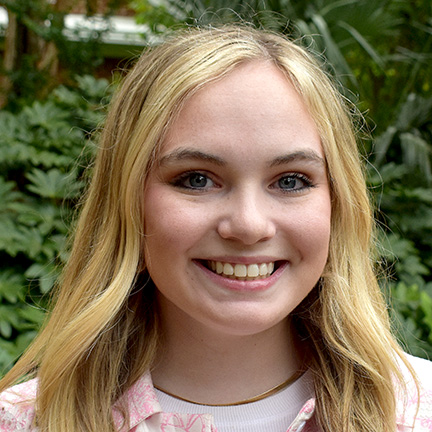
Grace Tippett
Tippett is a multimedia journalist at the University of South Carolina. She plans to attend law school and practice media law. Tippett runs the sorority recruitment process at USC. She has written about voter registration and housing for the student-run Daily Gamecock. Tippett has worked with Midlands Gives, a community-wide day of giving that raises funds for Midlands nonprofits. Her work this year helped them raise more than $3.4 million.
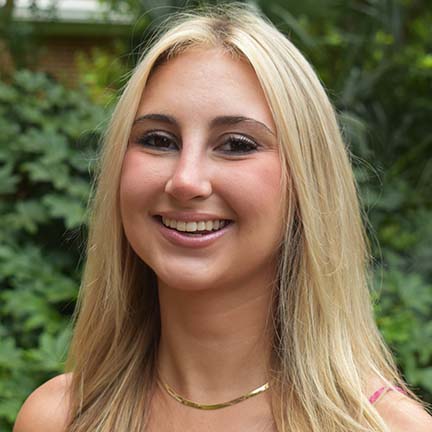
Sammy Sobich
Sobich is a senior from Charleston at the University of South Carolina, pursuing a bachelor’s in journalism and master’s in strategic communication. She writes about the modern South, such as the farm-to-table movement, travel, music and events. In her free time, she fishes, boats and photographs the Lowcountry. She maintains a social media presence, writing about Charleston, from the restaurant scene to local brands and artisans.

